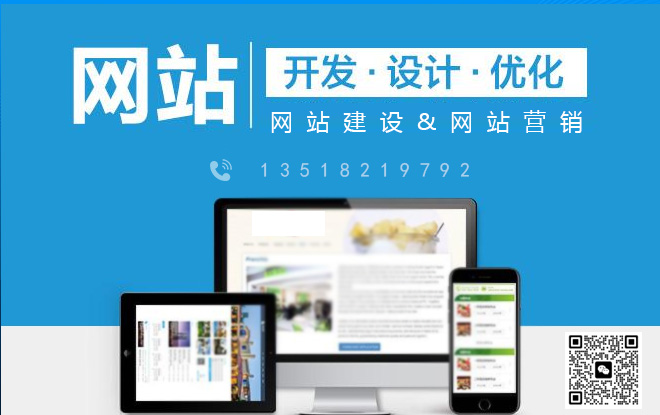go中设计模式之结构型模式
外观模式
1. 定义: 外部与一个子系统通信必须通过一个统一的对象进行,为子系统中的一组接口提供一致界面。
2. 代码示例:
// 定义对外API
type API interface {
Test()
}
func NewAPI() API {
return apiImpl{newMod()}
}
type apiImpl struct {
m mod
}
func (a apiImpl) Test() {
a.m.mod()
}
// 需要交互的内部模块
type mod interface {
mod()
}
func newMod() mod {
return modImpl{}
}
type modImpl struct {
}
func (m modImpl) mod() {
}
3. 实现步骤
- 定义内部模块
- 定义对外交互接口及实现
4. 使用场景
- 当要为一个复杂子系统提供一个简单接口时可以使用外观模式。该接口可以满足大多数用户的需求,而且用户也可以越过外观类直接访问子系统。
- 客户程序与多个子系统之间存在很大的依赖性。引入外观类将子系统与客户以及其他子系统解耦,可以提高子系统的独立性和可移植性。
- 在层次化结构中,可以使用外观模式定义系统中每一层的入口,层与层之间不直接产生联系,而通过外观类建立联系,降低层之间的耦合度。
5. 优点
对客户屏蔽子系统组件

成都创新互联主要从事成都做网站、成都网站设计、网页设计、企业做网站、公司建网站等业务。立足成都服务七星,十余年网站建设经验,价格优惠、服务专业,欢迎来电咨询建站服务:18982081108
适配器模式
1. 定义: 将一个接口转换成客户希望的另一个接口。
2. 代码示例:
// 定义被适配的接口
type Adapter interface {
Request() string
}
type adaptee struct {
}
func (adaptee) Request() string {
}
func NewAdapter() Adapter {
return &adaptee{}
}
// 定义目标接口
type Target interface {
TargetRequest() string
}
func New(adapter Adapter) Target {
return &target{adapter}
}
type target struct {
Adapter
}
func (t *target) TargetRequest() {
t.Request()
}
3. 实现步骤
- 定义被适配的接口和实现
- 定义目标接口和实现,并且实现接口由被适配接口创建
4. 使用场景
系统需要使用现有的类,而这些类的接口不符合系统的需要。
5. 优点
将目标类和适配者类解耦,通过引入一个适配器类来重用现有的适配者类,而无须修改原有代码。
装饰模式
1. 定义: 动态地给一个对象增加一些额外的职责。
2. 代码示例:
// 定义组件
type Component interface {
Calc() int
}
type ConcreteComponent struct{}
func (*ConcreteComponent) Calc() int {
return 0
}
// 定义装饰对象
type MulDecorator struct {
Component
num int
}
func WarpMulDecorator(c Component, num int) Component {
return &MulDecorator{
Component: c,
num: num,
}
}
func (d *MulDecorator) Calc() int {
return d.Component.Calc() * d.num
}
type AddDecorator struct {
Component
num int
}
func WarpAddDecorator(c Component, num int) Component {
return &AddDecorator{
Component: c,
num: num,
}
}
func (d *AddDecorator) Calc() int {
return d.Component.Calc() + d.num
}3. 实现步骤
- 定义组件
- 定义装饰对象
- 使用装饰对象生成组件
4. 使用场景
在不影响其他对象的情况下,以动态、透明的方式给单个对象添加职责。
5. 优点
可以通过一种动态的方式来扩展一个对象的功能,通过配置文件可以在运行时选择不同的装饰器,从而实现不同的行为。
享元模式
1. 定义: 享元模式通过共享技术实现相同或相似对象的重用。
2. 代码示例:
// 定义享元对象
type ImageFlyweight struct {
data string
}
func NewImageFlyweight(filename string) *ImageFlyweight {
// Load image file
data := fmt.Sprintf("image data %s", filename)
return &ImageFlyweight{
data: data,
}
}
func (i *ImageFlyweight) Data() string {
return i.data
}
// 定义享元对象工厂
type ImageFlyweightFactory struct {
maps map[string]*ImageFlyweight
}
var imageFactory *ImageFlyweightFactory
func GetImageFlyweightFactory() *ImageFlyweightFactory {
if imageFactory == nil {
imageFactory = &ImageFlyweightFactory{
maps: make(map[string]*ImageFlyweight),
}
}
return imageFactory
}
func (f *ImageFlyweightFactory) Get(filename string) *ImageFlyweight {
image := f.maps[filename]
if image == nil {
image = NewImageFlyweight(filename)
f.maps[filename] = image
}
return image
}
type ImageViewer struct {
*ImageFlyweight
}
func NewImageViewer(filename string) *ImageViewer {
image := GetImageFlyweightFactory().Get(filename)
return &ImageViewer{
ImageFlyweight: image,
}
}
func (i *ImageViewer) Display() {
fmt.Printf("Display: %s\n", i.Data())
}3. 实现步骤
- 定义享元对象
- 定义享元工厂
- 使用享元工厂创建
4. 使用场景
- 一个系统有大量相同或者相似的对象,由于这类对象的大量使用,造成内存的大量耗费。
对象的大部分状态都可以外部化,可以将这些外部状态传入对象中。 - 使用享元模式需要维护一个存储享元对象的享元池,而这需要耗费资源,因此,应当在多次重复使用享元对象时才值得使用享元模式。
5. 优点
享元模式从对象中剥离出不发生改变且多个实例需要的重复数据,独立出一个享元,使多个对象共享,从而节省内存以及减少对象数量。
代理模式
1. 定义: 给某一个对象提供一个代理,并由代理对象控制对原对象的引用。
2. 代码示例:
package proxy
type Subject interface {
Do() string
}
type RealSubject struct{}
func (RealSubject) Do() string {
return "real"
}
type Proxy struct {
real RealSubject
}
func (p Proxy) Do() string {
var res string
// 在调用真实对象之前的工作,检查缓存,判断权限,实例化真实对象等。。
res += "pre:"
// 调用真实对象
res += p.real.Do()
// 调用之后的操作,如缓存结果,对结果进行处理等。。
res += ":after"
return res
}3. 实现步骤
- 定义接口
- 定义实现对象
- 定义代理实现对象
4. 使用场景
- 并由代理对象控制对原对象的引用,增加请求注入劫持
5. 优点
代理模式能够协调调用者和被调用者,在一定程度上降低了系统的耦合度。
桥接模式
1. 定义: 给某一个对象提供一个代 理,并由代理对象控制对原对象的引用。
2. 代码示例:
package bridge
import "fmt"
type AbstractMessage interface {
SendMessage(text, to string)
}
type MessageImplementer interface {
Send(text, to string)
}
type MessageSMS struct{}
func ViaSMS() MessageImplementer {
return &MessageSMS{}
}
func (*MessageSMS) Send(text, to string) {
fmt.Printf("send %s to %s via SMS", text, to)
}
type MessageEmail struct{}
func ViaEmail() MessageImplementer {
return &MessageEmail{}
}
func (*MessageEmail) Send(text, to string) {
fmt.Printf("send %s to %s via Email", text, to)
}
type CommonMessage struct {
method MessageImplementer
}
func NewCommonMessage(method MessageImplementer) *CommonMessage {
return &CommonMessage{
method: method,
}
}
func (m *CommonMessage) SendMessage(text, to string) {
m.method.Send(text, to)
}
type UrgencyMessage struct {
method MessageImplementer
}
func NewUrgencyMessage(method MessageImplementer) *UrgencyMessage {
return &UrgencyMessage{
method: method,
}
}
func (m *UrgencyMessage) SendMessage(text, to string) {
m.method.Send(fmt.Sprintf("[Urgency] %s", text), to)
}
3. 实现步骤
4. 使用场景
5. 优点
名称栏目:go中设计模式之结构型模式
文章URL:http://mswzjz.cn/article/ijjioj.html